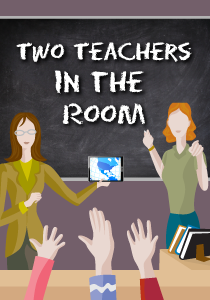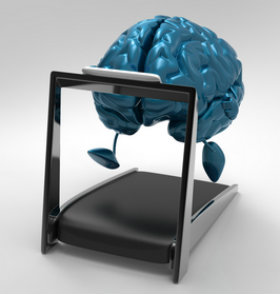Help Kids Boost Their Executive Function
A MiddleWeb Blog

These seem like hard-to-reach learners – but what would you say if I told you there were surefire ways to get these kids to become organized and self-motivated, and to take charge of their own learning? It’s true! Just keep reading….
The answer comes from the frequently forgotten skills that are necessary for all learners to be successful. Sometimes teachers just seem to focus on the content and forget this necessary aspect of the learning process. Are you and your co-teacher guilty of this? Not sure? OK, here’s the question:
When is the last time you incorporated strategies to support your students’ executive function skills?
All too often learners’ capacity for learning is masked by the necessity to develop strategies that increase their ability to plan, execute, and monitor their own learning.
Our brain’s executive function is what allows each of us to control and organize our thoughts and behaviors. All students in the middle grades can benefit from support to strengthen their executive functioning – and our students with learning disabilities need it even more.

Embed Executive Functioning (EF) Skills For ALL
It is not a secret that instructional strategies that work for students with special needs are good for all students. As we consider the variable learners in all classrooms, we know students benefit from clear directions, a scaffolded instructional process, and support to create personal goals that direct them toward lasting achievements. So, co-teachers, let’s do this!
Four ways to embed EF strategies
Link the strategy with the curriculum: Check out these 6 Scaffolding Strategies to Use with Your Students at Edutopia.
- Model and explicitly teach the strategy and support with scaffolds as needed. Be sure to read and apply these 16 Elements of Explicit Instruction by Anita Archer and Charles Hughes. If you’re looking for more information, check out their book Explicit Instruction: Effective and Efficient Teaching for more helpful ideas and applications.
- Provide time for students to practice, practice, practice within the daily lesson activities. Remember, when you vary your use of the co-teaching models, you can naturally embed time for your students to collaborate and practice learning the content as well as EF strategies.
- Directly guide students’ motivation and self-monitoring to increase their ability to transfer EF skills across time and settings. If you are looking to gain a deeper understanding of how to guide students to self-motivate and take charge of their learning, Larry Ferlazzo is the educator to turn to—check out this link at Edutopia to get you started (and learn about Larry’s 2023 book on motivation here).
Promoting independent learning
As you make it a point to weave in any of the four ways to embed EF strategies into your daily and weekly classroom routines, make sure to consider these three ideas to guide your students to take charge of their learning.
Teach your students to:
Set group and individual goals: Check out Scholastic to see some specific ways to create S.M.A.R.T. goals with your students.
- Apply mnemonics and other memorization techniques to increase student engagement and memory. You can start with this link to 9 Types of Mnemonics for Better Memory from Dennis Congos.
- Make sure to incorporate ways to encourage students to switch gears when thinking. We must provide opportunities for students to shift ideas and apply mental flexibility as they make decisions, problem solve, and engage in the moment-to-moment learning. Understood
is a fantastic resource for parents and teachers – check it out and learn 6 Ways Kids Use Flexible Learning by Amanda Morin. These are strategies all learners need—so why not apply a new idea this week with your co-teacher?
This post would not be complete without mentioning Universal Design for Learning. When we plan to increase our students’ EF skills, it is good to know there’s a UDL guideline for that! Check out Guideline 6: Provide Options for Executive Function. The ideas for application are truly boundless!
So just do it! Pick one Executive Function strategy to embed into your classroom routine this week and then come back and tell us how it went—let’s work together to create clear thinking, successful learners in classrooms around the world!
How do you incorporate EF strategies in your classroom? What is one way you plan to increase your students’ EF skills?




































